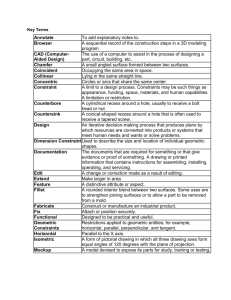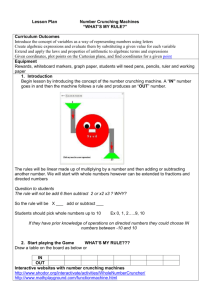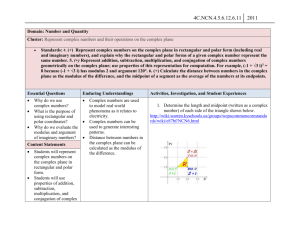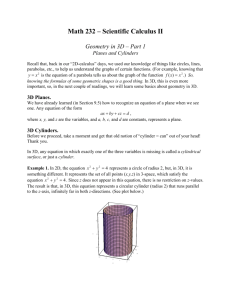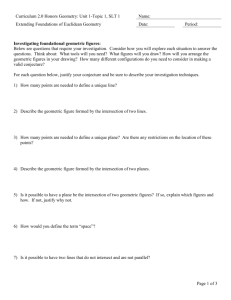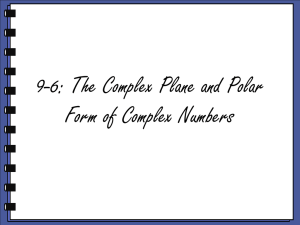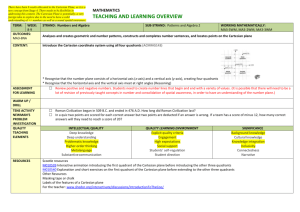Eigenvalues and Eigenvectors
advertisement
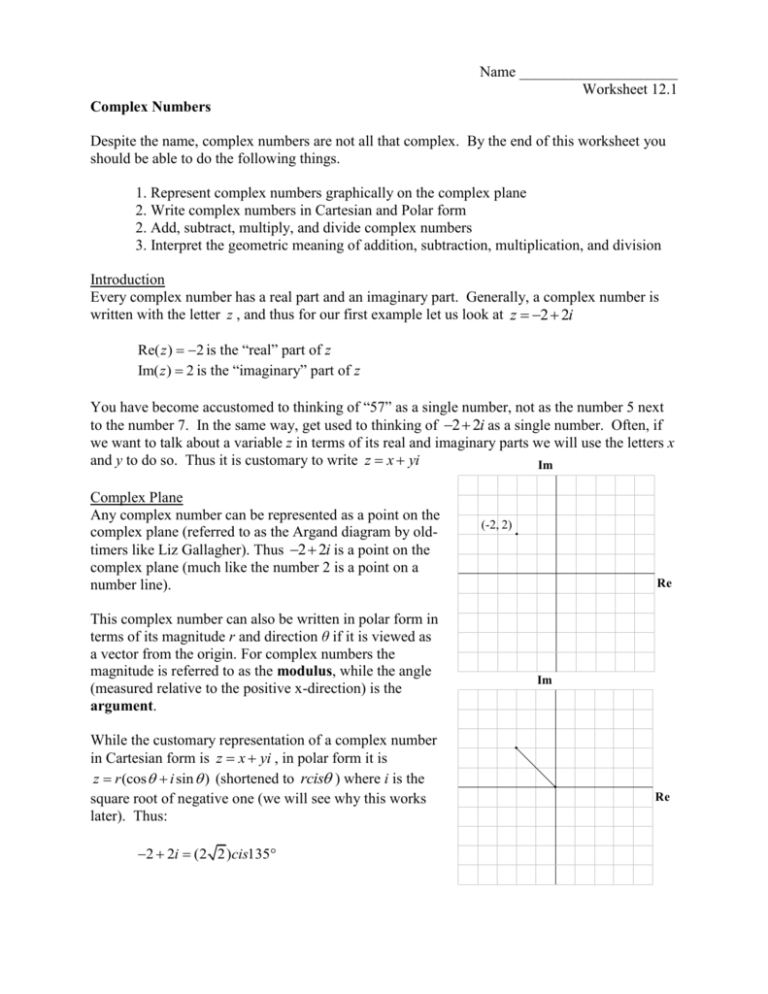
Name _____________________ Worksheet 12.1 Complex Numbers Despite the name, complex numbers are not all that complex. By the end of this worksheet you should be able to do the following things. 1. Represent complex numbers graphically on the complex plane 2. Write complex numbers in Cartesian and Polar form 2. Add, subtract, multiply, and divide complex numbers 3. Interpret the geometric meaning of addition, subtraction, multiplication, and division Introduction Every complex number has a real part and an imaginary part. Generally, a complex number is written with the letter z , and thus for our first example let us look at z 2 2i Re( z ) 2 is the “real” part of z Im( z ) 2 is the “imaginary” part of z You have become accustomed to thinking of “57” as a single number, not as the number 5 next to the number 7. In the same way, get used to thinking of 2 2i as a single number. Often, if we want to talk about a variable z in terms of its real and imaginary parts we will use the letters x and y to do so. Thus it is customary to write z x yi Im Complex Plane Any complex number can be represented as a point on the complex plane (referred to as the Argand diagram by oldtimers like Liz Gallagher). Thus 2 2i is a point on the complex plane (much like the number 2 is a point on a number line). This complex number can also be written in polar form in terms of its magnitude r and direction θ if it is viewed as a vector from the origin. For complex numbers the magnitude is referred to as the modulus, while the angle (measured relative to the positive x-direction) is the argument. While the customary representation of a complex number in Cartesian form is z x yi , in polar form it is z r (cos i sin ) (shortened to rcis ) where i is the square root of negative one (we will see why this works later). Thus: 2 2i (2 2)cis135 (-2, 2) Re Im Re The Square Root of Negative One The last key to answering all of the problems below is to accept the following relationship. i 2 1 Thus, whenever you see i 2 , just replace it with -1. You now have all the tools that you need to answer the problem below. Good luck! 1. Find the following complex numbers in Cartesian form. (a) i 2 = (b) (2 3i) (1 i) = (c) (4 2i) (2 i) (1 5i) = (d) (3 i )(2 2i) = (e) (2 i )(1 i )(2 3i ) = (f) i 2006 = (g) (Note that given z 3 2i the complex conjugate of z is z 3 2i ) (2 i ) = (3 2i ) (h) Given z 2 i find z 4 (i) (A sketch will really help) 6cis60 = (j) (Angles can also be in radians, instead of degrees) cis = Im 2. Derive x and y in terms of r and θ – then memorize this result. A sketch is vital. x Re(rcis ) Re y Im(rcis ) = 3. In Physics it is customary to use the notation re i . Write ei in terms of the sine and cosine functions. This is a famous result called Euler’s equation. 4. Find the modulus r z and argument arg( z ) Im of z x yi . Again, memorize this important result. r x yi Re arg( x yi) 5. Find the following complex number in polar form (you may have to switch into Cartesian form to do the calculation) Im (a) 3 4i = (b) i = Re (c) 1 = (d) cis i = 3 (e) (2cis )(3cis ) = 2 2 6. Complex addition has a very nifty geometric interpretation. Consider z 2 i and w 1 3i (a) Sketch both z and w on the Complex plane. Im (b) Consider u 2 4i . Find u z and u w (c) Sketch u z and u w (d) In words describe the geometric affect of complex addition. (e) Without doing any calculations, sketch z w and z w (f) What is the geometric affect of complex subtraction? Re Im 7. On the complex plane plot (1 i), (1 i)2 , (1 i)3 , (1 i) 4 , (1 i)5 , etc Re Im 8. On the complex plane plot the following points. (a) (1 i ) and i (1 i ) (b) 4 and 4i (c) ( 3 2i ) and i (3 2i ) Re (d) ( 1 4i ) and i ( 1 4i ) What is the geometric meaning of multiplying by the complex number i ? 9. On the complex plane plot the following points. (a) (1 i ) and (1 i )(1 i ) Im (b) 4 and (1 i ) 4 (c) ( 3 2i ) and (1 i )(3 2i) (d) ( 1 4i ) and (1 i )(1 4i) What is the geometric effect of multiplying a complex number by (1 i ) ? Re Make a hypothesis of the geometric effect of multiplying by a complex number. (Hint: the answer has something to do with the modulus and argument) Im 10. Convert the following complex numbers into Cartesian form and plot them on the complex plane. (a) z 1 cis 2 Re 3 (b) w 2cis 4 Find both ratios (plot these numbers as well) (c) z w (d) w = z Make a hypothesis about the effect of division in terms of the modulus and argument.
